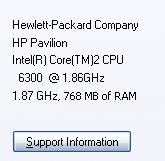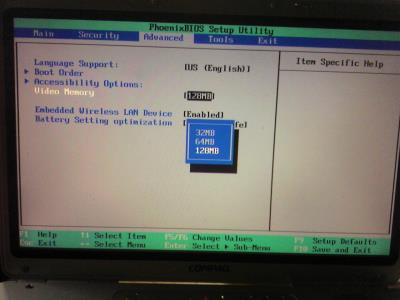I don’t know if it’s just me but I think motherboard manufactures changed the way that they handle integrated video memory. I like to buy a new computer every year. Every year around Black Friday, I buy a system on sale and sell my old one on eBay. I think it’s a pretty good setup. You buy the cutting edge equipment and sell what you have before its features phase out of popularity.
Speed Fetish
I do this because I have an obsession with performance. I like to make sure my computers work efficiently. Unfortunately, most computers out of the box are not optimized for performance. They are manufactured with the dumb does-not-know-any-better home user in mind.
Typical performance-boosting tasks I carry out with every new computer I own include doubling the memory, terminating the system restore “feature,” disabling the swap file, and uninstalling the superfluous, “complimentary,” memory-hogging, thread-wasting programs set up by the computer OEM manufacturer. For those who can empathize with me, I absolutely hate WildTangent.
Marketing Lies
 The other day I noticed that my new computer was running slower than normal. Suddenly, I saw that ominous bubble saying something like “You are low on memory. Try increasing page file.” “That’s impossible!” I thought. “I have 1 GB of memory!” But when I checked the System applet, it turned out I had 768 MB of memory. I quickly glanced at the features sticker on the front of my tower to verify that I certainly bought a computer with “1GB Blazing-fast DDR2-5300 RAM.” So, what’s the problem?
The other day I noticed that my new computer was running slower than normal. Suddenly, I saw that ominous bubble saying something like “You are low on memory. Try increasing page file.” “That’s impossible!” I thought. “I have 1 GB of memory!” But when I checked the System applet, it turned out I had 768 MB of memory. I quickly glanced at the features sticker on the front of my tower to verify that I certainly bought a computer with “1GB Blazing-fast DDR2-5300 RAM.” So, what’s the problem?
Sharing Sucks
I discovered that the Intel Integrated Graphics Chipset shares the RAM with my motherboard. What gives? That’s fine that it has to share but does it really need to take that much! In my day, we would run fine on 16 MB of VRAM! If you don’t have any high-end graphics requirements like me, why don’t you go into your BIOS and lower that VRAM reservation to the double digits. Your memory-intensive, multitasking, million-tab Firefox windows will thank you.




